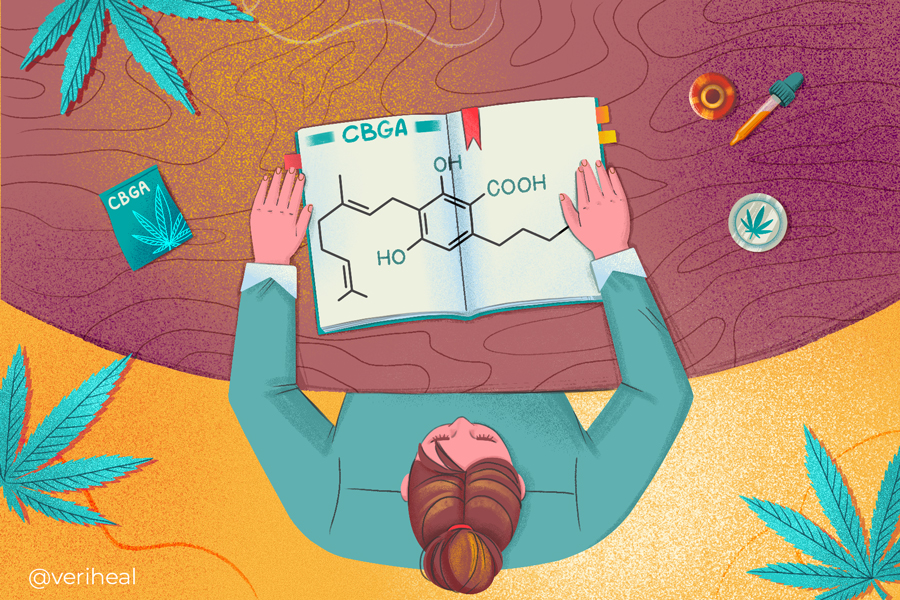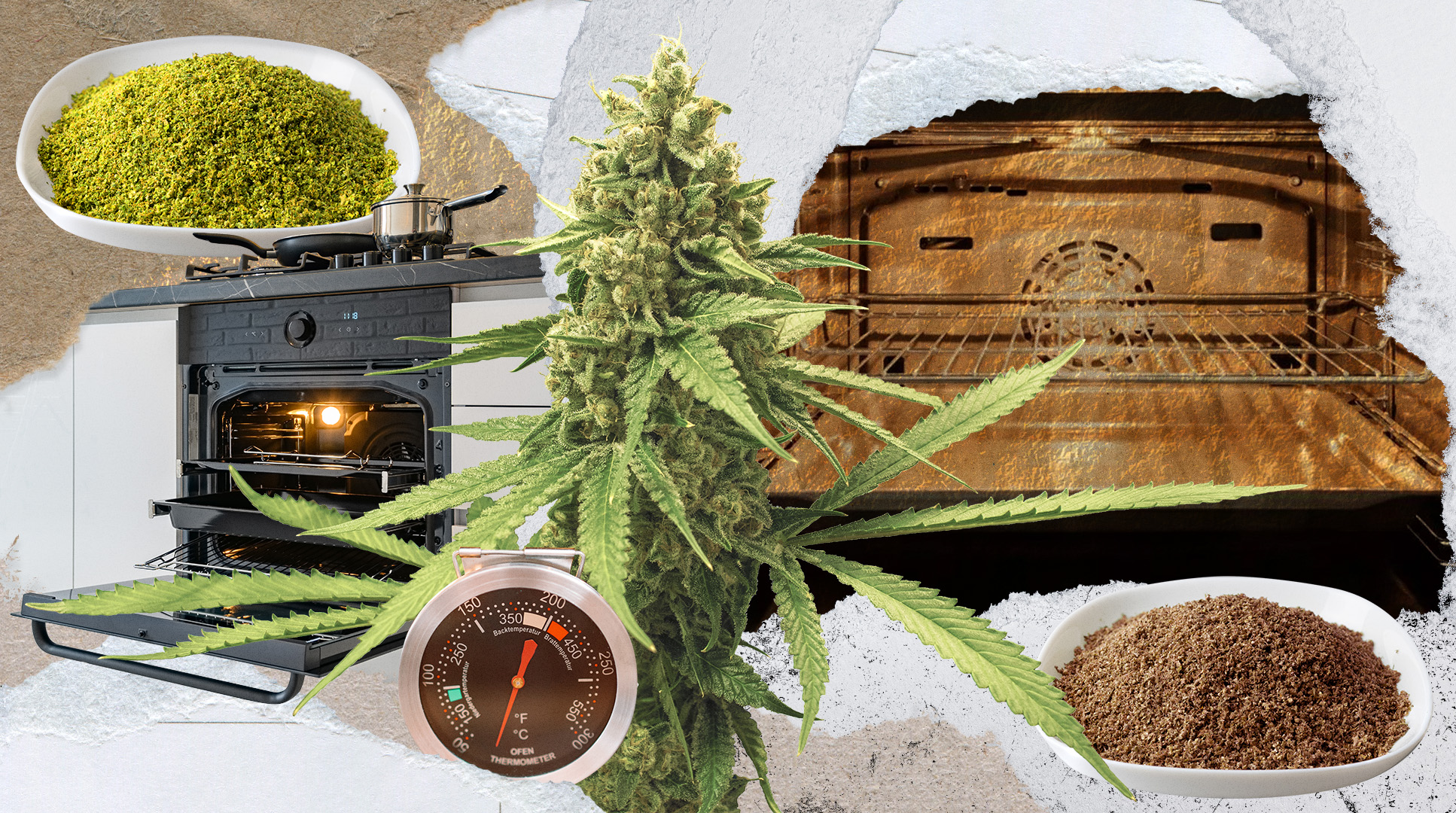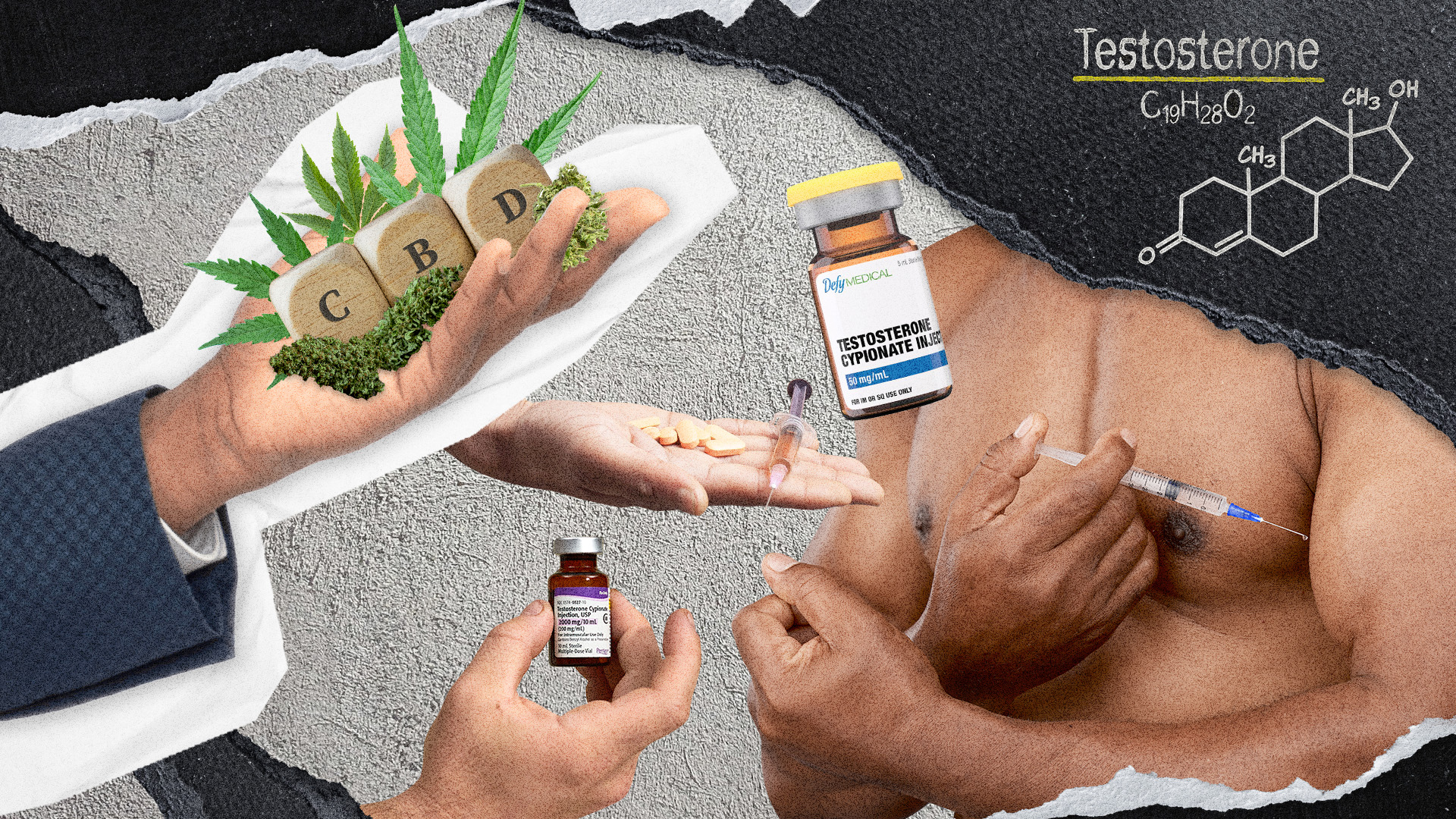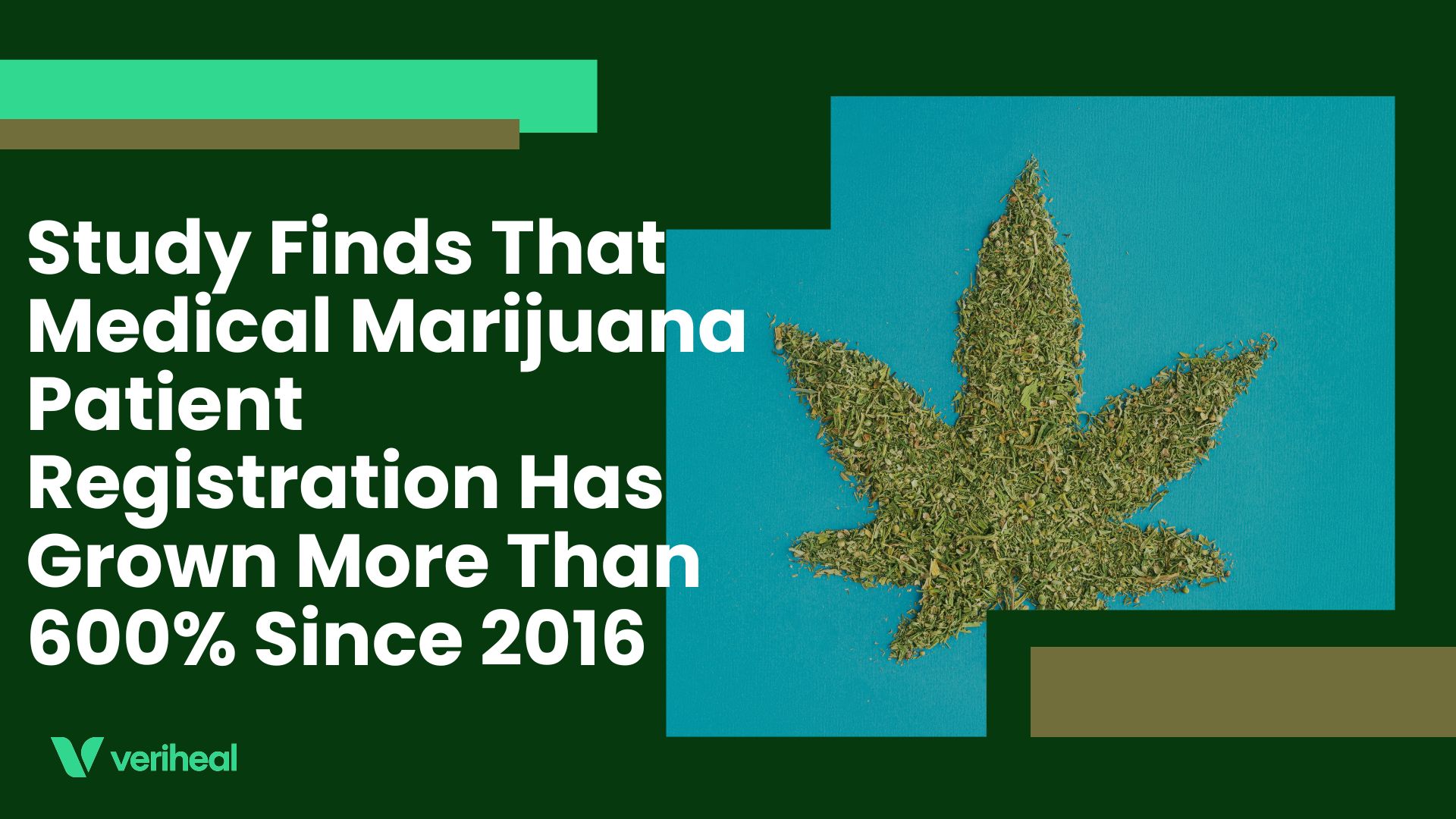Have you ever heard of CBGA? If not, don’t worry—you’re not alone. Many cannabis advocates are unfamiliar with this lesser-known cannabinoid, but it may be the key to some powerful therapeutic benefits.
This article will dive deep into this fascinating cannabinoid, including its potential applications for health and wellness seekers. From its distinctive role in all cannabis plants to the different ways humans are looking to leverage this compound’s power, here’s everything you need to know about cannabigerolic acid (CBGA).
What Is CBGA?
CBGA stands out as the unique cannabinoid ancestor from which all other cannabinoids originate.
It’s considered a “raw” cannabinoid, meaning it hasn’t been exposed to light or heat and remains in an un-decarboxylated state. If you were to pick the leaf of a young cannabis plant and start munching on it, you’d be getting lots of CBGA—and very little THC or CBD. CBGA gets converted to these other cannabinoids later on in the plant’s life cycle.
CBGA is also considered a trace cannabinoid, which means mature cannabis doesn’t contain much of it. As a result, CBGA products typically need to undergo extraction or distillation processes that concentrate them.
What Makes CBGA Worth Trying?
Several therapeutic benefits of CBGA have been noted based on preliminary research, including:
Research has also shown that CBGA has the ability to prevent cancer cell spreading and induce cell death, or apoptosis, although further research is still underway in this regard.
Studies have indicated that taking a CBGA supplement may help reduce mild pain, nausea, and vomiting, in addition to regulating various biochemical processes within the body to protect its cells from damage.
How Does CBGA Work Therapeutically?
CBGA and other raw cannabinoids have a slightly larger chemical structure than their decarboxylated counterparts. Due to this, they have difficulty binding to endocannabinoid receptors in the body. For example:
- THCA doesn’t bind to the brain’s CB1 receptors in the same way as THC
- CBDA doesn’t bind to the body’s CB2 receptors directly the way CBD does
- CBGA is not able to bind to CB1 or CB2 receptors in the same way as CBG
For too long, CBGA’s remarkable potential was overlooked because researchers believed that since it wasn’t intoxicating, it didn’t directly interact with the endocannabinoid system. Instead of unlocking its potential, researchers unnecessarily directed their efforts at trying to convert CBGA into THC, perhaps missing many opportunities for groundbreaking discoveries.
In reality, however, this perspective was more than a little flawed. CBGA may not bind to endocannabinoid receptors directly, but it does interact with receptors that affect the body’s serotonin levels, cellular health, and perception of pain.
Additionally, CBGA’s activity at serotonin 5-HT1A receptors suggests that it may also play a subtle role in regulating mood and appetite.
How to Enjoy the Benefits of CBGA
For those who want to experience the advantages of CBGA, several different methods exist. Juicing raw cannabis is one such option; however, it requires access to freshly harvested plants from legal growing operations in cannabis-friendly states.
If this approach is not readily available, consider sourcing CBGA-infused goods from your local dispensary. In addition, topicals or balms that contain CBGA may be an attractive alternative for those looking to gain nutrient-rich benefits applied directly to the skin.
What Cannabis Strains Are High in CBGA?
The best strains for CBGA are those CBG strains that have been processed at the lowest temperature possible, as high temperatures convert CBGA into CBG.
Here are a few of the strains with the highest recorded levels of CBG:
- Jack Frost CBG: This strain is one-of-a-kind, bred specifically to provide an abundance of CBG—about 14.5%—with calming effects minus the typical “high” associated with marijuana products. Users report feeling uplifted while remaining focused.
- White Widow: White Widow is a Cannabis Cup award-winning sativa-dominant hybrid that packs a punch. With high levels of CBG, this strain delivers a vibrant and energizing effect, making it perfect for sparking extra motivation.
- Madras CBG: With up to 15% CBG concentration, the Madras CBG strain offers a balanced and uplifting experience, perfect for those looking to remain energized without overstimulation throughout their day.
A Final Note
While there is more research to be done surrounding CBGA and its potential medical benefits, current evidence suggests it can be a powerful aid in the treatment of many health conditions. However, don’t forget to research and consult a doctor or pharmacist before trying anything new if you are currently taking any prescription medications.
As enthusiasts of both hemp and marijuana continue digging deeper into the properties of cannabis, more exciting breakthroughs will surely follow. As cannabis becomes more accepted worldwide, this cannabinoid will be one to watch.
Note: The content on this page is for informational purposes only and is not intended to be professional medical advice. Do not attempt to self-diagnose or prescribe treatment based on the information provided. Always consult a physician before making any decision on the treatment of a medical condition.
Author, Share & Comments
















